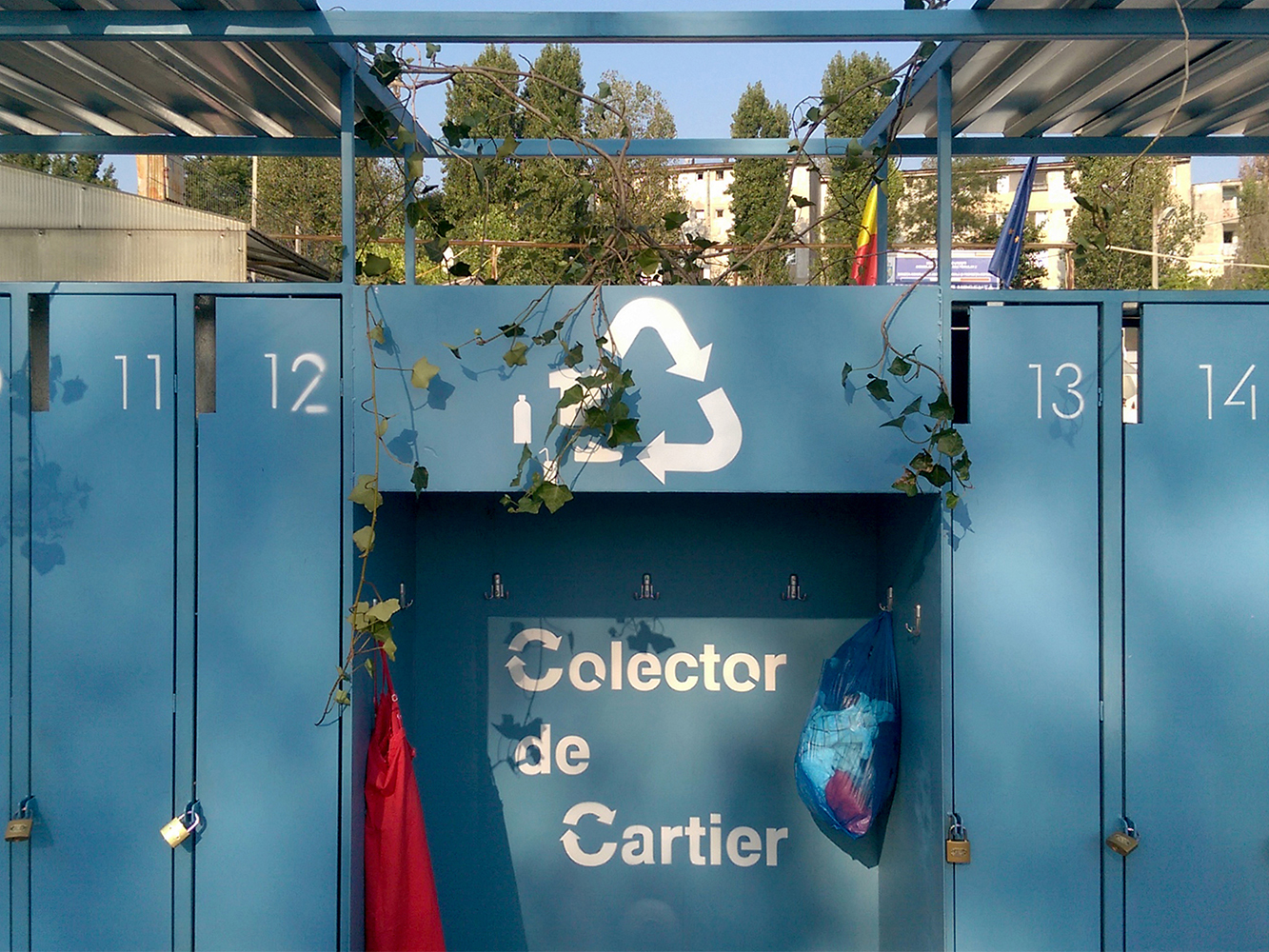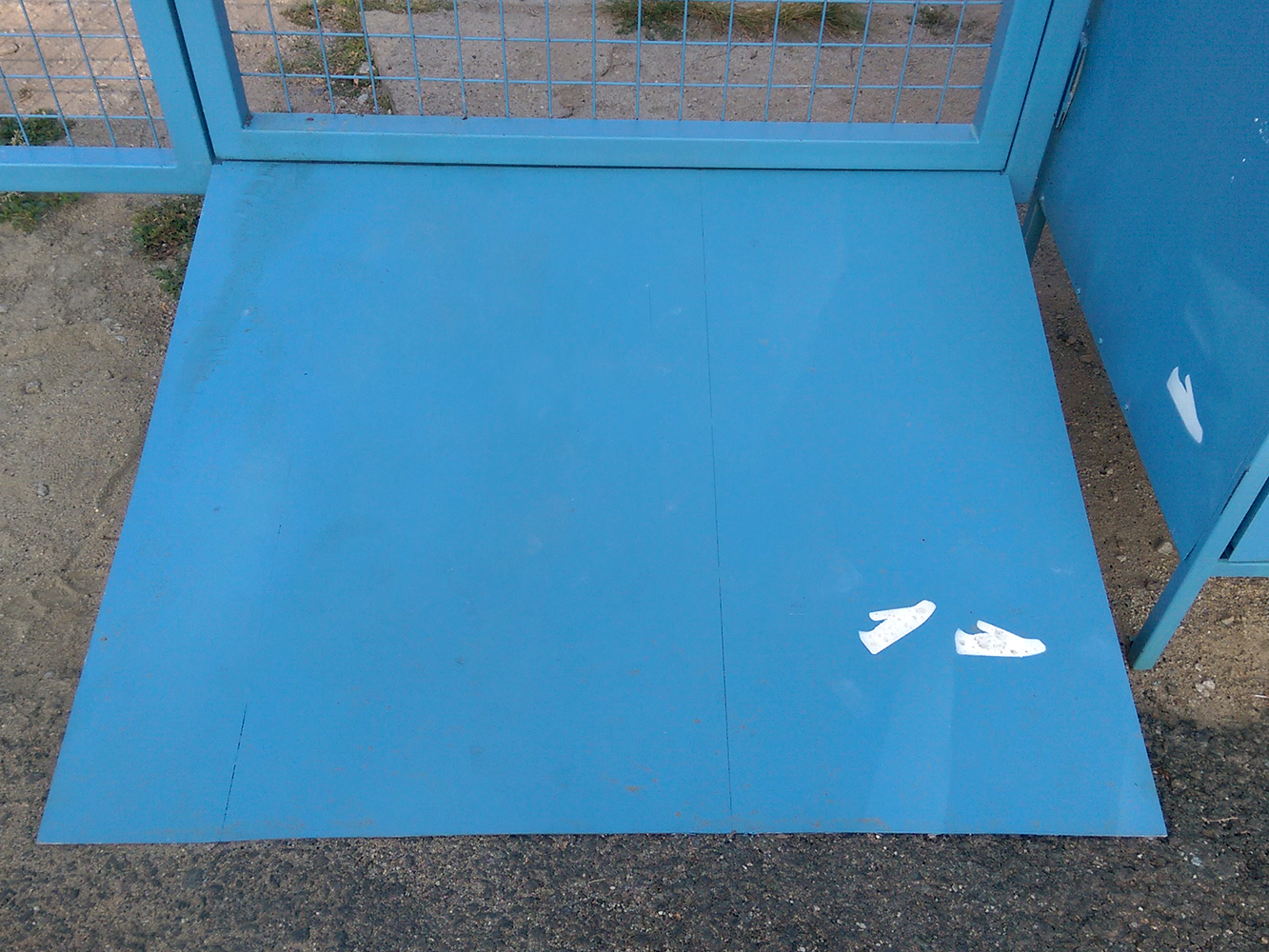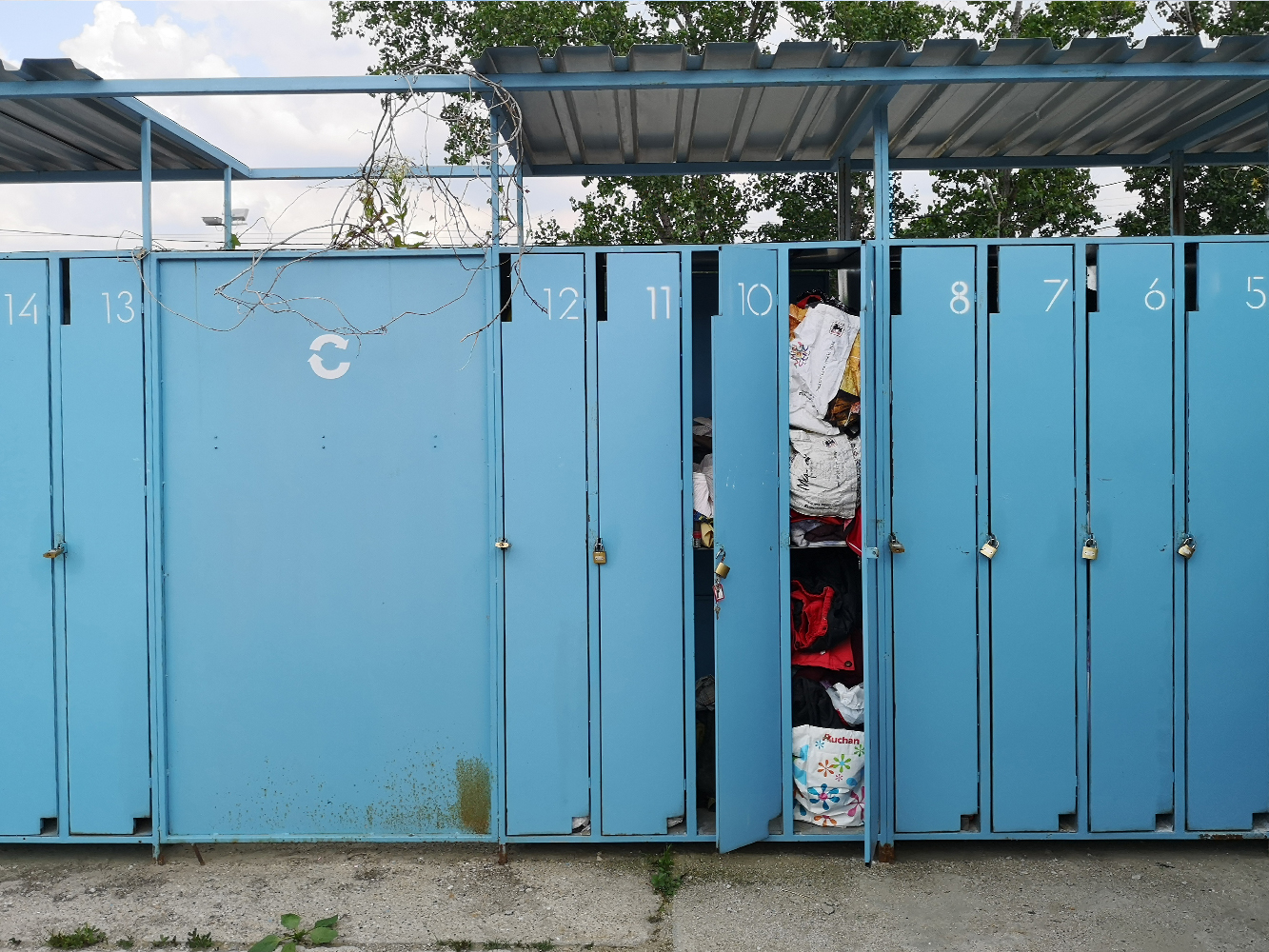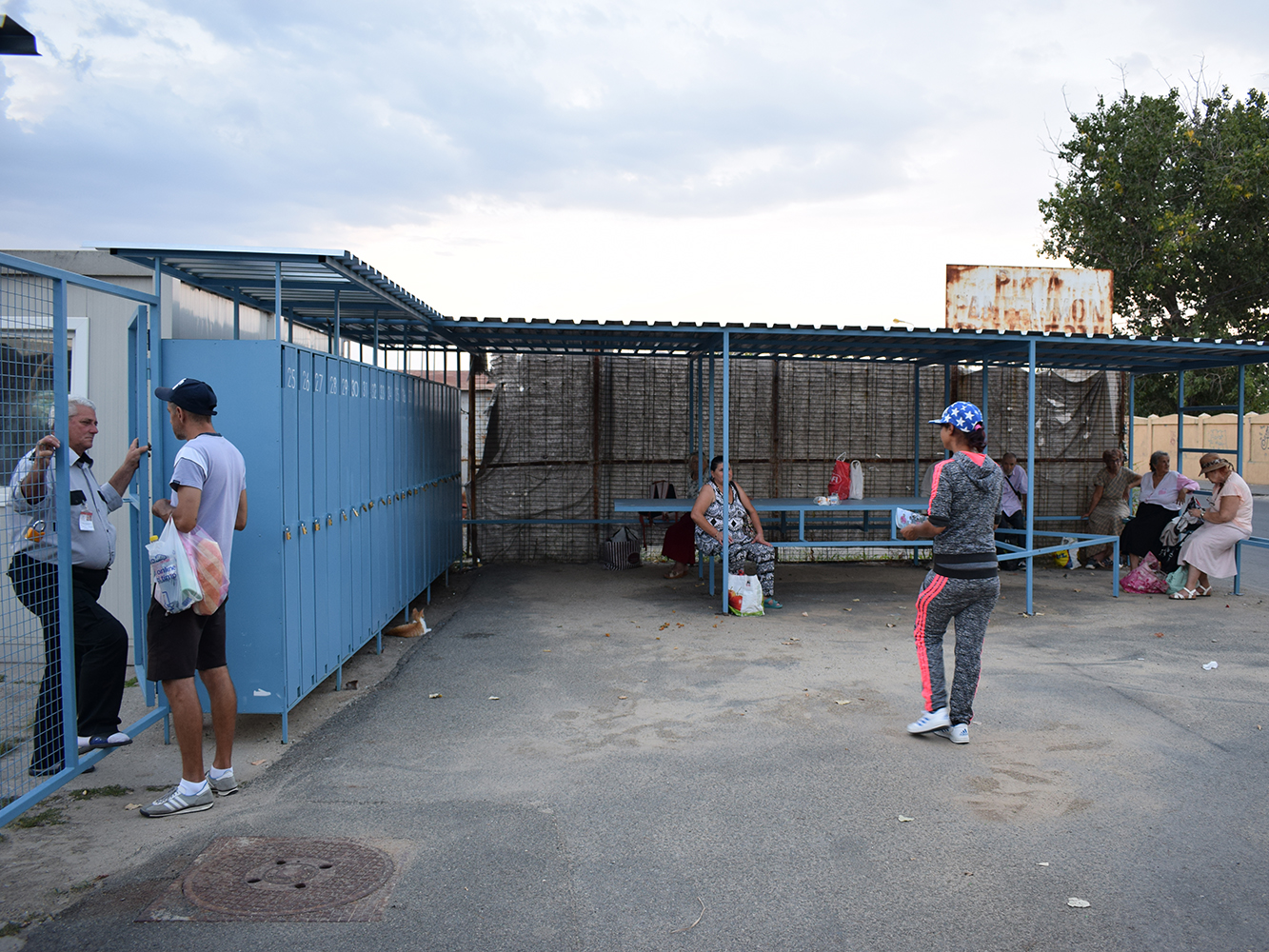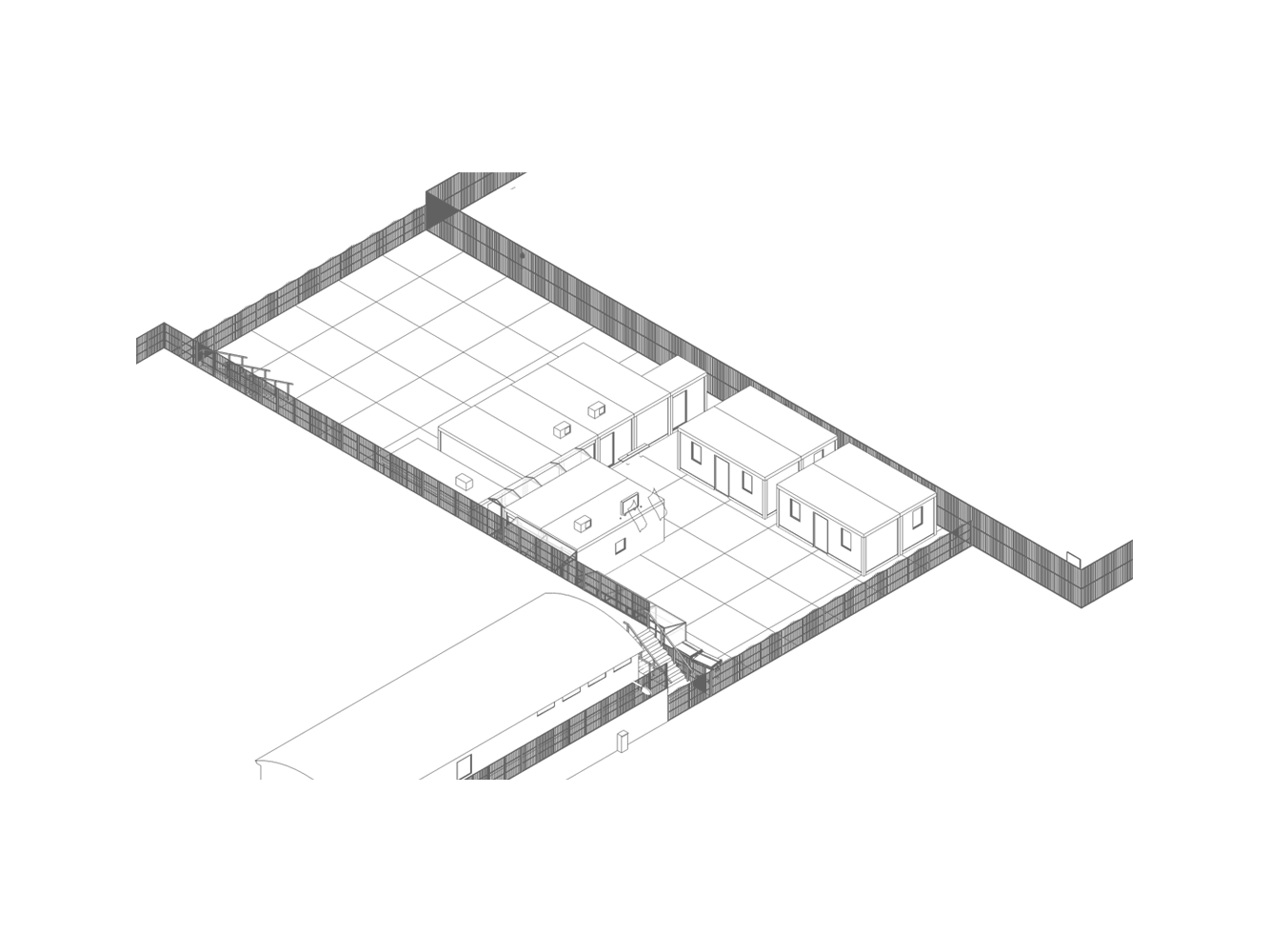substandardPLUS
As an attempt of redefining the limit, the project uses the existing spatial and human resources of the temporary night shelter in the Pantelimon neighborhood, in order to respond and upgrade the daily needs of the homeless people who currently live there. The property limit is used as a space for mediation and negotiation, a position that would question the street and its role as a public space and the shelter as public infrastructure.
In response to the excessive presence of fences in the Bucharest public spaces, the project proposes a new form of the border made out of 48 storage units, a neighborhood resource collector, a covered space, and a planter. The presence of the equipment extends and completes the shelter’s restrictive night-time schedule, allowing individual access to personal belongings throughout the day by transforming the existing property limit from an object of separation into a space that is continuously defined through its everyday use. The limit acts as a flexible storage apparatus for personal belongings, a necessary feature that does not exist inside the shelter.
By placing the equipment on the border of the property, they influence both the internal routine of the shelter and the activities carried out in public spaces by the residents of the center. Although it does not solve the precariousness of such living conditions, the intervention cultivates through construction, management and use, the individual identity and the collective responsibility of the sheltered homeless, mediating their relationship with the neighborhood. The existing boundary is negotiated between two instances of concern related to public space: the street – open for collective activities and the shelter – with controlled access, situated in the care of the Local Administration, thus redefining the shelter’s relationship with the neighborhood.
The project transforms a marginal situation – both spatial and social – into a new place with multiple uses, upgrading the living conditions from an official temporary shelter to an informal semi-permanent accommodation. From a separation tool, the boundary becomes a space for help and interaction, that consolidates their living situations, which helps in the end to create a relatively safe perimeter.
Year: 2018 – 2019
Phase: Stage 1 – Implemented
Funding: Chamber of Romanian Architects, Ruvix.ro, individual donations
Client: Social Assistance and Child Protection Sector 2
Location: Ion Vlad 5-4 str., Bucharest, Romania
* Selected project for The European Prize for Urban Public (2022)
* Initiatives / Experiments / Visions Award at BETA Timișoara Architecture Biennial (2020 -ex aequo )
* Public Space Architecture Award” at the Bucharest Architecture Annual (2019)
* AFCN nomination in the category “Cultural activation in (relation to) the public space that enhances the collective memory and redefines the identity of the place” (2019)
Date
September 2018

